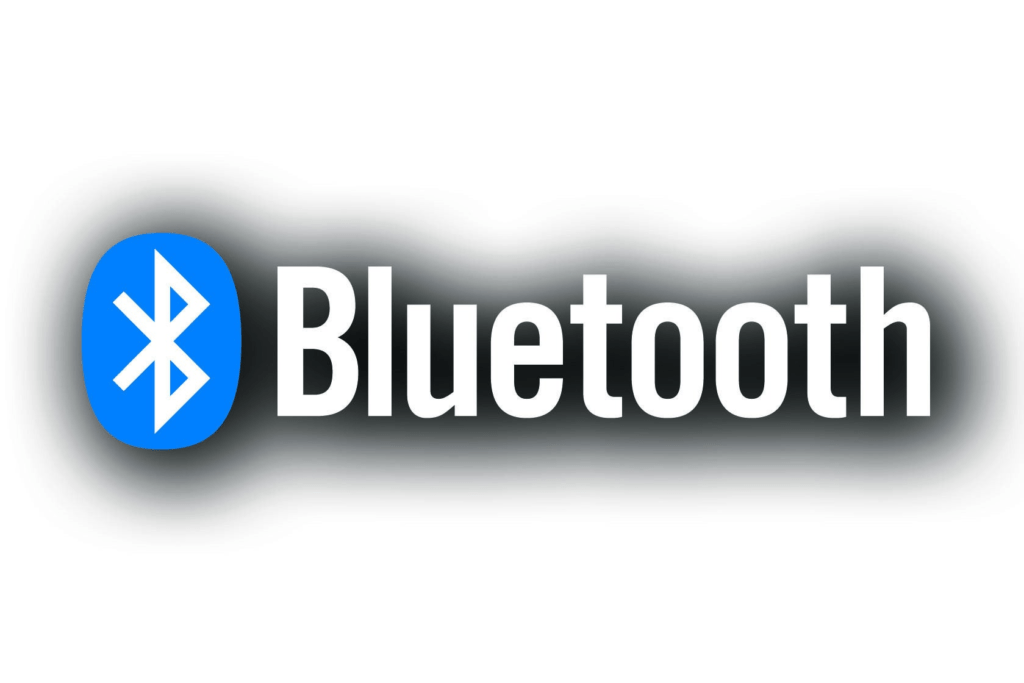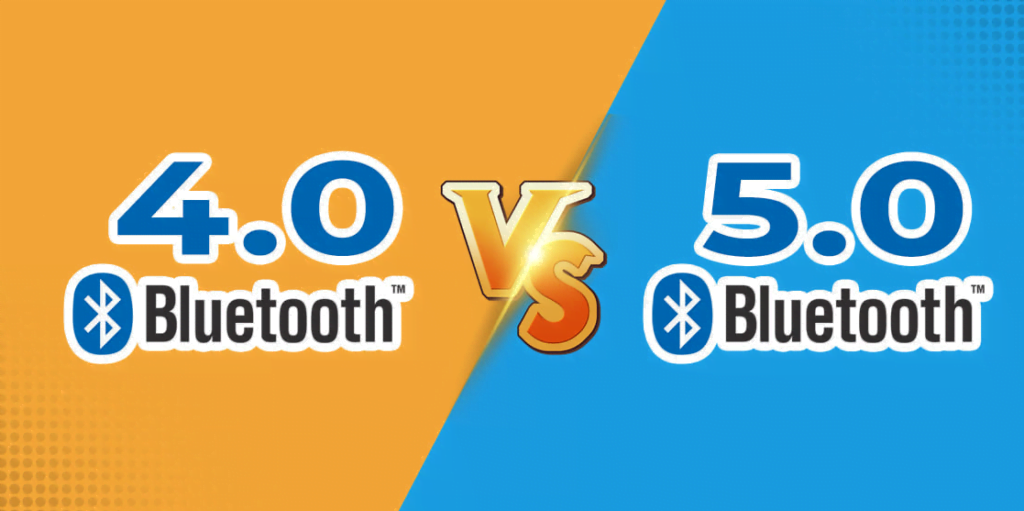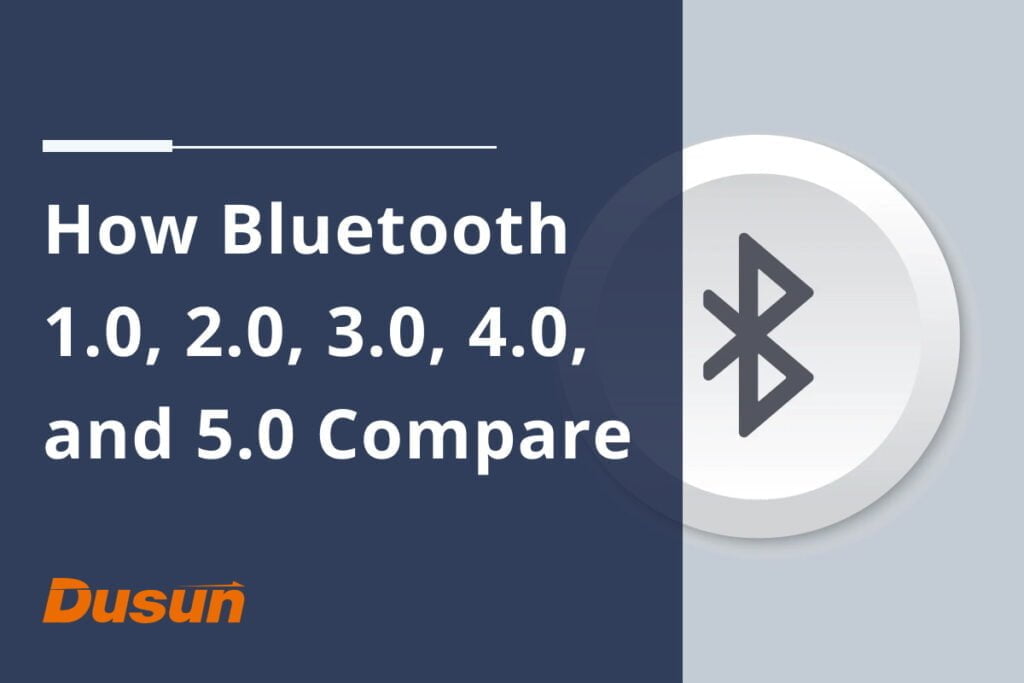Bluetooth gateway integrates a Bluetooth communication module to collect data from end Bluetooth devices like sensors, and upload them to the background server. So before you know Bluetooth gateway, Knowing Bluetooth technology first may help you better understand it.
From smartphones, wireless headsets and mouse,to Bluetooth gateways, Bluetooth is present in practically every gadget. Great new features that are not supported by earlier versions are present in the most recent versions. The primary distinction between Bluetooth versions is that the most modern Bluetooth versions offer a quick data transfer rate. They have a greater connection range and reliability than prior Bluetooth versions, are more energy-efficient, and provide better security.
Also read: What is a Bluetooth gateway?
Different Bluetooth Versions

Bluetooth 1
The first Bluetooth version ever created was Bluetooth 1.0. With its initial specifications, this was seen in 1999. However, because of deployment problems, it did not become as well-known as quickly. Another version of Bluetooth 1.1 was subsequently released as a result of this.
Two years later, in 2001, Bluetooth 1.1 replaced the prior version. Interoperability, dependability, and backward compatibility were all enhanced, though not entirely. This just indicated that a new version would be released soon.
The most popular version of Bluetooth, Bluetooth 1.2, came along in 2003 with faster pairing times. It has an Adaptive Frequency Hoping function that stopped Bluetooth from interfering with other wireless technologies like WiFi.
Bluetooth 2
In 2004, this version 2.0 was made public. Some of the main enhancements in this version include GFSK and phase-shift keying modulation (PSK). GFSK’s function is to accelerate data transfer by supporting the Enhanced Data Rate (EDR).
After the release of Bluetooth version 2.1, the technology advanced even more by supporting a brand-new feature called “simple, secure pairing” (SSP). It improved security, extended inquiry response (EIR), and pairing functionality, enabling better device filtering prior to connection.
Bluetooth 3
This Bluetooth model was introduced to the market in 2009. Bluetooth 3.0 High Speed (HS) mode allows data transfer at speeds of up to 24 Mbps over a collocated 802.11 link. Other new Bluetooth 3.0 requirements include Ultra-wideband, Enhanced Power Control, L2CAP Enhanced modes, Unicast Connectionless Data, and Alternate MAC/PHY. Its high power consumption rate has considerable drawbacks.
Bluetooth 4
Bluetooth 4.0
Bluetooth 4.0 was introduced in 2010. Back then, the version was advertised as Bluetooth Smart and Wibree, even though it still supported all of the previous versions’ functions. Because BLE devices are powered by coin-cell batteries, power consumption has increased significantly.
Bluetooth 4.1
In 2013, Bluetooth version 4.1 was launched, substantially enhancing the user experience. This version allowed for simple data transfers in bulk. Additionally, it supported several concurrent roles and coexisted with LTE.
This version also supports the following additional new features:
- 11n PAL
- Minor duty cycle-based public relations
- Time of discovery in part
- Connection L2CAP
- Topology and dual-mode
- Link-layer topology in LE
- thorough interlaced scanning
- A brief data advertisement segment
- services for wireless coexistence on mobile devices
- Wideband speech from improvements to the audio architecture
Bluetooth 4.2
In 2014, Bluetooth version 4.2 was released, which paved the way for the Internet of Things (IoT). The first companies to enter the Bluetooth IoT market are MOKOBlue and other manufacturers, who also significantly contribute to the advancement of Bluetooth.
Its primary areas for improvement consist of: Link-layer privacy policies that expanded the scope of scanner filtering, Internet Protocol Support Profile, Version 6 Low Energy Secure Connection that Lengthened Data Packets (IPSP).
Bluetooth 5
Bluetooth 5.0
The more powerful Bluetooth 5.0 had a longer battery life. It debuted in 2016 with a 50 to 200 meter outdoor transmission range improvement and a 2 Mbps maximum transfer speed, more than doubling the capabilities of Bluetooth 4.2. First devices that enable Bluetooth 5.0 were the Galaxy S8, iPhone 8, and iPhone X. Its improved location service can gather data before connecting and is capable of doing so.
Bluetooth 5.1
In 2019, Bluetooth 5.1 was unrestricted. When comparing Bluetooth 5.0 and 5.1, version 5.1 was the first to implement the Mesh-based model hierarchy. Its primary areas for improvement are as follows:
GATT Caching Periodic, Advertising Sync Transfer, Advertising Channel Index, Angle of Departure (AoD), Bluetooth Angle of Arrival (BLE AoA).
Bluetooth Mesh technology breaks the “one-to-one” pairing between traditional Bluetooth devices and transforms it into a “many-to-many” signal transmission mode. Get to know how Dusun IoT’s BLE Mesh gateway help Bluetooth mesh devices connect to the cloud here.
Bluetooth 5.2
The Bluetooth SIG launched Bluetooth version 5.2 during the CES 2020, which was held in January 2020. This version was released alongside the next generation of Bluetooth LE Audio. The most notable difference between Bluetooth 5.1 and Bluetooth 5.2 is that version 5.2 includes Isochronous Channels (ISOC). Isochronous Channels works with Bluetooth 5.2 or later devices and serves as the foundation for LE Audio implementation. Bluetooth version 5.2 also includes the following three features:
ISOC (Isochronous Channels)、EATT (Enhanced Attribute Protocol)、LE Power Control (LEPC).
Check our declared Bluetooth smart gateways here:
https://launchstudio.bluetooth.com/ListingDetails/164515
https://launchstudio.bluetooth.com/ListingDetails/111047
https://launchstudio.bluetooth.com/ListingDetails/98392
Bluetooth 5.3
Bluetooth 5.3 is the version of Bluetooth technology as of April 2021. It latest version has several new features compared to its predecessors including higher data transfer rates, better power management, and support for new devices and applications. Bluetooth 5.3 has a maximum data transfer rate of 3Gbps, compared to 1Gbps in Bluetooth 5.2. Additionally, Bluetooth 5.3 also includes support for new connectivity features such as mesh networking and enhanced Simple Pairing.
Bluetooth SIG estimates that the Bluetooth Low Energy single-mode device shipments are forecasted to more than triple (3X) over the next five years, until 2025. A rapidly growing technology platform, such as Bluetooth, needs to evolve constantly to stay relevant and fuel the ecosystem’s growth. The new Bluetooth 5.3 version was released to ensure just this – a continued global growth!
Bluetooth 5.4
Bluetooth 5.4, the latest version of the Bluetooth technology, introduces several important improvements and new features. The most noteworthy ones include: support for Periodic Advertising with Responses (PAwR), enhanced Encrypted Advertising Data (EAD), optimized support for Electronic Shelf Labels (ESL), as well as improved overall system scalability and energy efficiency. These innovations bring more secure, efficient and scalable wireless communication solutions for Internet of Things (IoT) applications.
In summary, the release of Bluetooth 5.4 marks significant advancements in Bluetooth’s ability to support large-scale IoT deployments, enhance power efficiency, and strengthen security. These improvements will help drive the widespread adoption of Bluetooth in smart home, retail, asset tracking, and other domains, further propelling the development of the IoT ecosystem.
Bluetooth 4 vs 5
Bluetooth 4 and Bluetooth 5 continue to work well with legacy devices; here are seven comparisons to help you decide which works best for your device.

Bluetooth Dada Transfer Rate
Compared with Bluetooth 4.2, Bluetooth 5.0 theoretically doubles the transmission rate, from 1Mbps to 2Mbps.
Bluetooth Range
While Bluetooth 5 supports 200m in Line Of Sight path in outdoor environment and 40m in indoor environment, Bluetooth 4 only offers 50m outdoor range and 10m indoor range. Therefore, Bluetooth 5 will function best if you wish to utilize your wireless earphones to listen to music while moving around the house or courtyard.
Explore: Bluetooth Long Range
Bluetooth Power Consumption
Compared to the Bluetooth 4, the Bluetooth 5 has been designed to consume less power on your smartphone. This implies that you can leave your Bluetooth on for longer.
Bluetooth Message Volume
While the Bluetooth 5 has a huge message capacity of 255bytes and more bytes for actual data payload, the Bluetooth 4 has a small message capacity of roughly 31bytes, which gives just 17 to 20 bytes for actual data payload.
Bluetooth Beacon Application
Bluetooth Beacons are more common with Bluetooth 5 because to the increase in speed and range, whereas they are less common with Bluetooth 4 due to the lower speed and range as well as the limited message size of 31 bytes.
Bluetooth IoT Assistance
With its improved range and speed, Bluetooth 5 readily satisfies the needs of IoT devices, whereas Bluetooth 4 cannot due to its slow speed and limited operating range.
Bluetooth Compatibility
While Bluetooth 5 is backward compatible with versions 1, 2, 3, 4, and 4.1 and version 4.2, while Bluetooth 4 performs best with devices that are compatible with version 4 series.
Bluetooth Classic vs BLE
The main difference between Bluetooth Classic and Bluetooth low energy is that BLE is designed for Very Low Power Operation. In addition, the following table shows a detailed comparison table on BLE vs Bluetooth Classic.
| Bluetooth Classic | Bluetooth Low Energy | |
| Solution Areas | Audio Streaming Data Transfer | Audio Streaming Data Transfer Location Service Device Networks |
| Device Communication | Point-To-Point | Point-To-Point Broadcast Mesh |
| Device Positioning | Not Support | Presence, Distance, Direction |
| ISM Band | 2.402-2.480 GHz ISM | 2.402-2.480 GHz ISM |
| Rates | 1Mb/s, 2Mb/s, 3Mb/s | 125kb/s, 500kb/s, 1Mb/s, 2Mb/s |
| Channels | 79 one MHz Channel with Adaptive Frequency Hopping | 40 two MHz Channel with Adaptive Frequency Hopping |
The Bluetooth Classic makes it easier to solve the devices needing continuous, short-range data transfer or audio streaming. In addition to wireless printers, and keyboards, it can also be used in in-car entertainment systems.
Likewise, Bluetooth Low Energy (LE) can be used in a kinds of computer peripherals and audio services. Thanks to its low power operation, it is best suitable for Bluetoot IoT devices, such as smart watches, BLE Gateway, and the like.
Get to know: What is Bluetooth Gateway
Bluetooth Future
Bluetooth technology continues to evolve, significantly impacting a wide array of applications and industries. Key trends and advancements include:
- Low Energy (LE) Audio: Bluetooth LE Audio, using the LC3 codec, promises improved audio quality, extended battery life, and better performance, making it ideal for small devices like earbuds and hearing aids. This includes support for high-quality 48 kHz, 32-bit audio with bitrates between 16 and 425 Kbps.
- Auracast™: Under Bluetooth 5.2, Auracast enables personal audio sharing in public venues. It can broadcast stereo audio streams to multiple devices simultaneously, enhancing uses in places like airports, gyms, and movie theaters. This allows users to hear broadcasts directly through their headphones or hearing aids, providing accessibility and multi-language support.
- High-Accuracy Distance Measurement (HADM): HADM improves Bluetooth’s ability for precise distance measurements between devices, which can be used in applications like digital keys and asset tracking. This enhancement supports various location-based services by providing more accurate positioning.
- Indoor Positioning Systems (IPS): Bluetooth is increasingly used for indoor navigation in complex venues like airports, hospitals, and museums. Technologies like RSSI radio networks and AoD beacons help users navigate via their smartphones.
- Device Networks: Bluetooth Mesh is significantly enhancing the control and monitoring capabilities of device networks in building automation and smart home systems. This trend supports applications such as lighting control, HVAC systems, and occupancy sensors.
- Higher Data Transfer Rates: With the growing demand for efficient data transmission for IoT devices, Bluetooth is enhancing its capacity for faster firmware updates, bulk data transfer, and streaming larger media files. This enables advanced applications in wearables, medical devices, and PC peripherals.
These advancements, supported by continual improvement in Bluetooth LE technologies, position Bluetooth as a critical component in the interconnected, wireless future
Bluetooth Version FAQs
Which Bluetooth version is the latest?
Bluetooth 5.0 (released in 2016), version 5.1 (January 2019), version 5.2 (December 2019), Bluetooth 5.3 (July 2021) and Bluetooth 5.4 (February 2023) is the latest version. Bluetooth 5.4 builds upon the previous versions of Bluetooth, introducing these significant advancements that are particularly beneficial for IoT and other wireless connectivity applications.
How do I update my Bluetooth version for my device?
There are a few ways you can update the Bluetooth version on your devices:
Operating System Updates:
For smartphones, tablets, and computers, check for available OS updates from the manufacturer. Major OS updates often include updated Bluetooth firmware and drivers.
Go to your device’s settings, look for the “Software Update” or “System Update” section, and install any available updates.
Bluetooth Adapter/Dongle Updates:
If you’re using a separate Bluetooth adapter or dongle connected to your computer, check the manufacturer’s website for any available driver or firmware updates.
Download and install the latest drivers for your specific Bluetooth adapter model.
Hardware Replacement:
If your device does not support Bluetooth 5.4 or a newer version, you may need to replace the Bluetooth hardware, either by getting a new device or adding a compatible Bluetooth adapter.
Check your device’s specifications to determine the maximum Bluetooth version it supports, and then purchase a compatible upgrade if available.
Bluetooth Module Replacement:
For devices like laptops or embedded systems, it may be possible to replace the internal Bluetooth module with a newer version that supports the desired Bluetooth specification.
Consult your device’s documentation or contact the manufacturer to see if this is an option.
The process for updating the Bluetooth version can vary depending on your specific device and its capabilities. It’s always a good idea to check with the manufacturer or consult the device’s documentation for the most accurate and up-to-date instructions.
What is the 2024 Bluetooth version?
The 2024 Bluetooth® Market Update includes an overview of updated forecasts for LE Audio, Auracast™ deployments, and the transition from Bluetooth Classic Audio to LE Audio. The report also highlights the progression of new, high-volume markets, such as electronic shelf labels (ESL) and Ambient IoT.



















